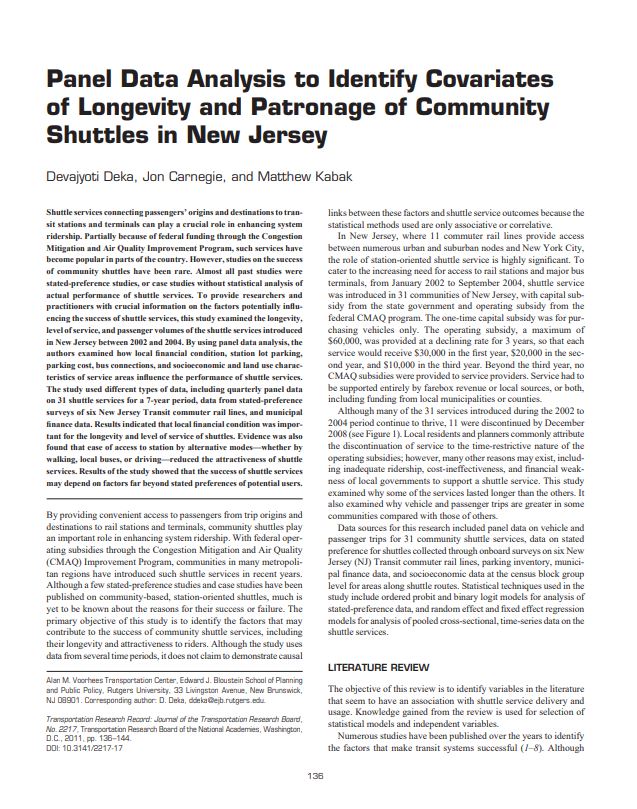Abstract
Shuttle services connecting passengers’ origins and destinations to transit stations and terminals can play a crucial role in enhancing system ridership. Partially because of federal funding through the Congestion Mitigation and Air Quality Improvement Program, such services have become popular in parts of the country. However, studies on the success of community shuttles have been rare. Almost all past studies were stated-preference studies, or case studies without statistical analysis of actual performance of shuttle services. To provide researchers and practitioners with crucial information on the factors potentially influencing the success of shuttle services, this study examined the longevity, level of service, and passenger volumes of the shuttle services introduced in New Jersey between 2002 and 2004. By using panel data analysis, the authors examined how local financial condition, station lot parking, parking cost, bus connections, and socioeconomic and land use characteristics of service areas influence the performance of shuttle services. The study used different types of data, including quarterly panel data on 31 shuttle services for a 7-year period, data from stated-preference surveys of six New Jersey Transit commuter rail lines, and municipal finance data. Results indicated that local financial condition was important for the longevity and level of service of shuttles. Evidence was also found that ease of access to station by alternative modes—whether by walking, local buses, or driving—reduced the attractiveness of shuttle services. Results of the study showed that the success of shuttle services may depend on factors far beyond stated preferences of potential users.
